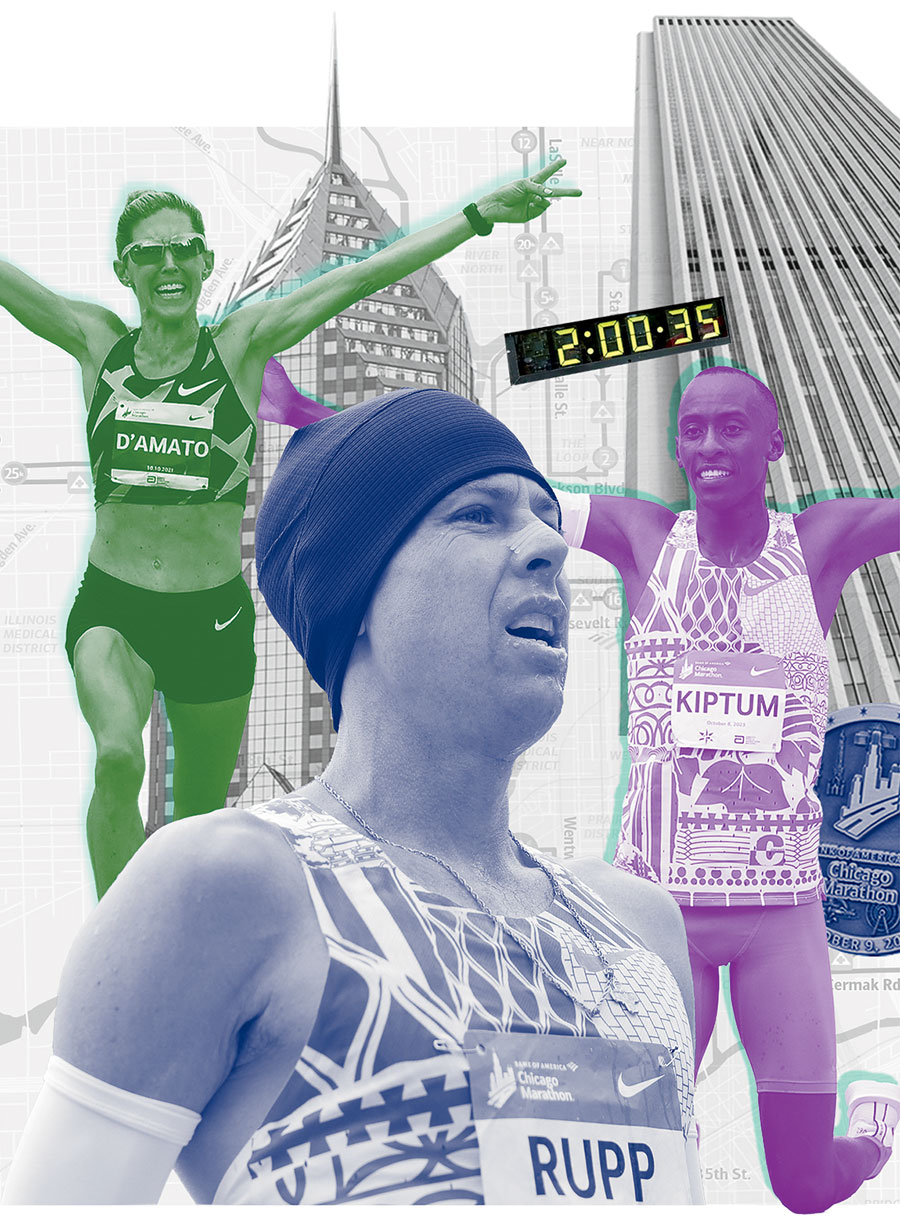It’s no coincidence that over the past 40 years, six world records have been set at the Chicago Marathon — most notably, the current men’s record: 2 hours 35 seconds. “It’s well known in the distance world, if you want to set a [personal record], you go to Chicago,” says Galen Rupp, who won here in 2017 and will be a commentator for this year’s race.
Chicago’s first world record came in 1984, when Steve Jones of Great Britain ran the course in 2:08:05. (He will be on hand to commemorate the 40th anniversary of that run.) And last year, Kelvin Kiptum of Kenya shattered the course record by three minutes in setting the men’s world record. He would have been back this year to challenge the elusive two-hour barrier, but only four months after his blistering Chicago race, the 24-year-old was killed in a car accident in Kenya.
“Athletes — men and women — have always gone faster here,” race director Carey Pinkowski says. “It’s just part of the culture.” It’s not only the elites, either. Chicago qualifies more runners for Boston than any other marathon. Let’s explore why.
The course
Olympic marathon champion Frank Shorter once said, “There are three reasons Chicago is fast: It’s flat, it’s flat, it’s flat.” (“The only hill is with 400 meters left,” says Rupp.) Knowing they won’t face uphill stretches, runners display “a kind of fearlessness,” says Pinkowski. But flatness is not the only factor: Because of Chicago’s grid system, the course has few twists and turns, with some straightaways going for miles, allowing runners to build up a head of steam.
The weather
Since Chicago holds its race in October, participants can count on cooler temperatures. “Marathon runners like it in the 40s,” says former American record holder Keira D’Amato, who is returning this year to what she calls her “favorite marathon” to try to recapture her title. Though dipping all the way into the 40s is rare, mild temperatures in the 50s or 60s are common on race day here. Of course, the weather doesn’t always cooperate: In 2007, temps reached the upper 80s, causing organizers to shut down the event, but not before a 35-year-old man died of heat stroke.
The pacers
Unlike Boston and New York, the other major U.S. marathon sites, Chicago employs runners to push the leaders to fast times in the early going. (In 2001, pacer Ben Kimondiu remained in the race, defeating favorite Paul Tergat, an Olympic silver medalist.) The year Rupp won, the pacers were absent, as an experiment, resulting in a tactical race, with a top time of 2:09. The next year, when the pacers returned, Britain’s Mo Farah won in 2:05.
The money
The Chicago Marathon offers a $50,000 bonus for a course record, on top of the $100,000 winner’s prize. That financial incentive helped draw Kiptum.
The crowds
Hundreds of thousands of people on the sidewalks cheer on not just the front-runners but those in the middle of the pack. Especially rousing are the drummers in Chinatown, between miles 21 and 22, where runners are hitting the wall as their legs bog down with lactic acid. “The folks on the South Side are my favorite people in the world,” enthuses local marathoner Ian McLeod, who ran a personal record of 3:12:40 in Chicago. “The energy of the other runners and the crowds are fantastic.” The crammed field of racers helps, too, he adds: “If you pace it right, passing people is a real shot in the arm.”



